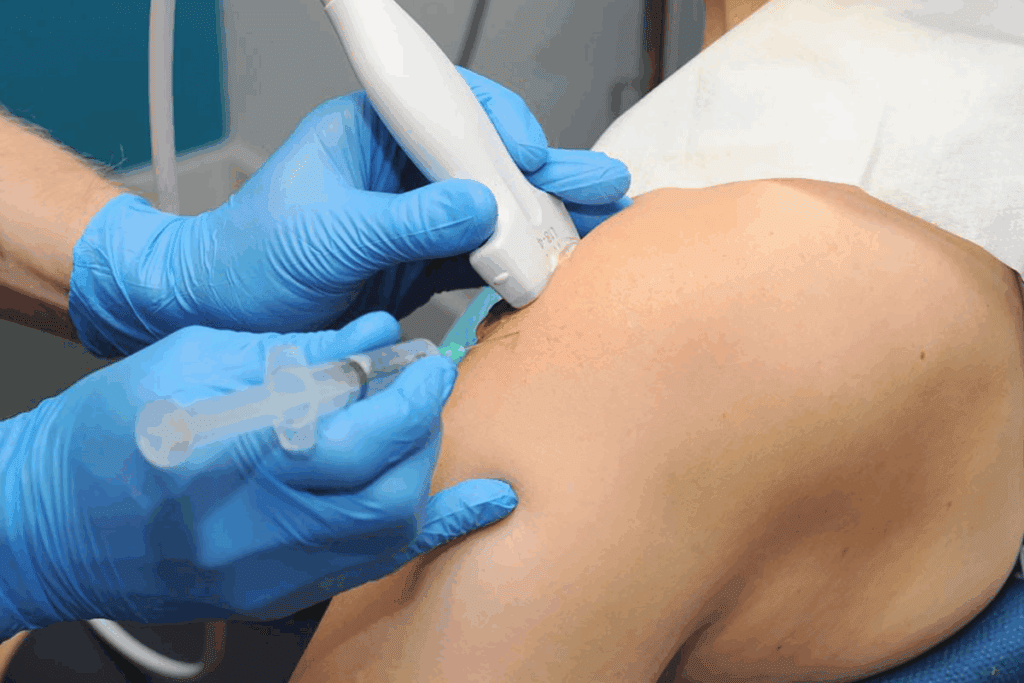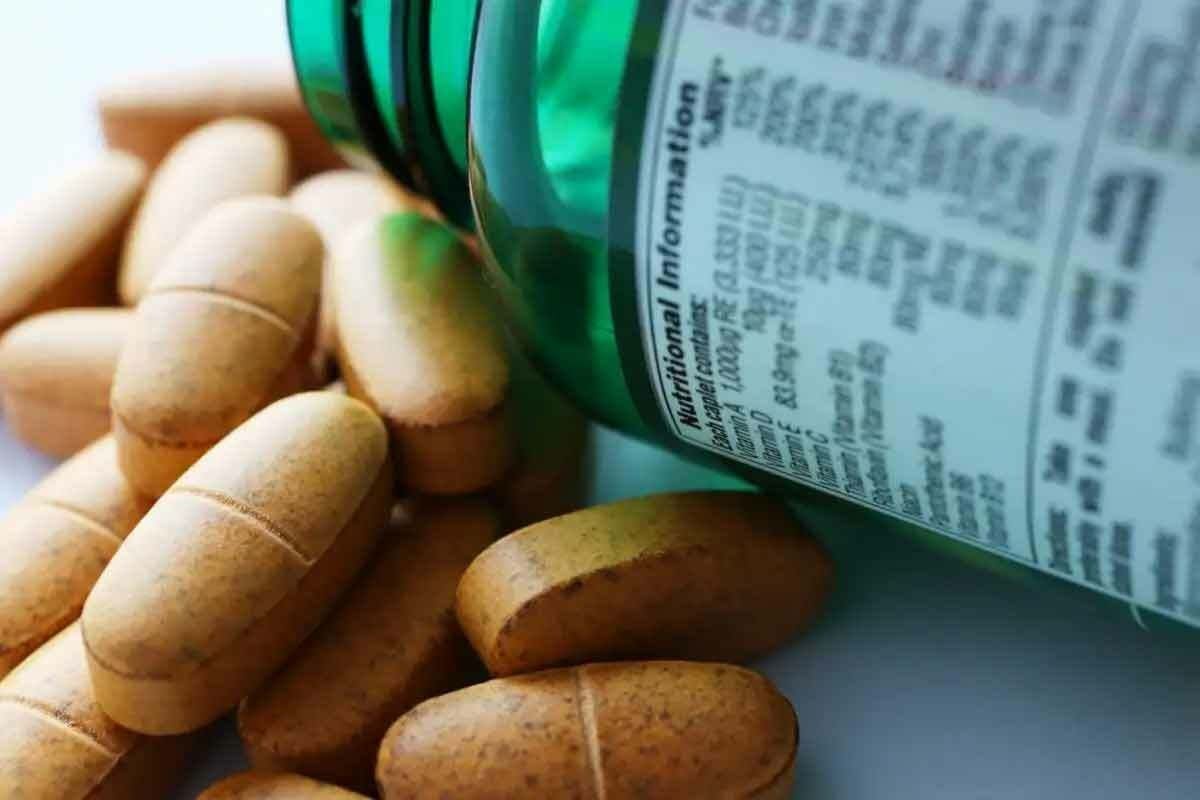Last Updated on November 26, 2025 by Bilal Hasdemir

We often use cortisone shots to treat various inflammatory conditions. They provide relief from pain and swelling. But these steroid injections can cause a range of reactions. It’s important to understand these after-effects for effective management.
Cortisone shots are a common treatment for joint pain, back problems, and other painful conditions. They help reduce inflammation, which in turn reduces pain. While generally safe, steroid injections can cause both local and systemic reactions. Learning about steroid injection after effects helps patients prepare and recover safely.
At trusted institutions like Liv Hospital, we guide our patients on how to manage these reactions and protect their well-being. In this article, we will explore the 10 most common reactions to steroid injections and provide guidance on how to manage them.
Key Takeaways
- Common reactions to steroid injections include pain, redness, and swelling at the injection site.
- Understanding these reactions is key to effective management.
- Trusted institutions guide managing reactions and protecting well-being.
- Local and systemic reactions can occur after steroid injections.
- Cortisone shots are used to treat various inflammatory conditions.
What to Expect After Receiving a Steroid Injection

Before getting a steroid injection, it’s good to know how it works and what happens next. These injections are used to treat many inflammatory conditions, like joint pain. We’ll cover the different types, their uses, and how they help.
Types of Steroid Injections and Their Medical Uses
There are several types of steroid injections, each for different needs. Cortisone shots are very common. They help with inflammation and pain in many parts of the body. They’re often used for osteoarthritis and tendonitis.
Other types include triamcinolone and methylprednisolone injections. They serve similar purposes.
Steroid injections are used for many things. They help with:
- Joint pain and inflammation from osteoarthritis
- Tendonitis and bursitis
- Inflammatory conditions like rheumatoid arthritis
- Sports injuries
How Steroid Medications Work in the Body
Steroid medications reduce inflammation in the body. When injected, they target the affected area for relief. They work by calming the immune system’s inflammation response, which reduces pain and swelling.
Knowing how steroid medications work helps manage expectations and side effects. They can greatly help those with inflammatory conditions by reducing inflammation.
Pain and Inflammation at the Injection Site

One of the most common side effects of steroid injections is pain and inflammation at the injection site. This discomfort is a natural response to the injection process and the body’s reaction to the steroid medication.
Why Post-Injection Pain Occurs
Post-injection pain happens for a few reasons. The needle insertion can cause micro-trauma to the tissue, leading to inflammation and pain. Also, the corticosteroid can irritate the area, adding to the discomfort.
Common causes of post-injection pain include:
- Micro-trauma to the tissue caused by the needle
- Irritation from the corticosteroid
- Inflammation at the injection site
Effective Methods to Reduce Injection Site Discomfort
Fortunately, there are ways to lessen pain and inflammation at the injection site. Applying an ice pack to the affected area can help reduce swelling and ease pain. Over-the-counter pain relievers can also help manage post-injection discomfort.
Some recommended methods include:
- Applying an ice pack to reduce swelling
- Taking over-the-counter pain relievers as directed
- Resting the affected area to avoid further irritation
By understanding the causes of post-injection pain and using these effective methods, patients can better manage their discomfort and recover more comfortably.
Post-Injection Flare: Temporary Symptom Worsening
A cortisone flare is a rare but serious reaction after a steroid injection. It affects a small number of patients. Symptoms usually get worse in the first 24 hours after the shot.
Recognizing a Cortisone Flare Reaction
It’s important to know the signs of a cortisone flare. Symptoms include more pain, swelling, or redness at the injection site. Knowing the difference between a flare and other issues is key to proper care.
The exact reason for a cortisone flare isn’t known. But it’s thought to be the body’s first reaction to the steroid. About 2-5% of people experience this temporary symptom worsening.
How to Manage Post-Injection Flares
Managing a post-injection flare needs self-care and sometimes medical help. Here are ways to ease the discomfort:
- Applying ice to the affected area to reduce pain and inflammation
- Resting the injected area to avoid exacerbating the condition
- Using pain relievers as directed by your healthcare provider
Keep an eye on your symptoms and see a doctor if they don’t get better or get worse.
| Management Strategy | Description | Benefits |
| Applying Ice | Reduces inflammation and numbs the area | Decreases pain and swelling |
| Resting the Area | Avoids putting stress on the injected joint or tissue | Allows the body to heal and reduces flare severity |
| Using Pain Relievers | Manages pain and discomfort | Improves patient comfort and functionality |
Skin Changes: Hypopigmentation, Atrophy, and Rashes
Steroid injections can cause skin changes like hypopigmentation, atrophy, and rashes. These happen when the injection is too close to the surface or in sensitive spots. It’s the body’s way of reacting to the steroid.
Common Skin Reactions After Steroid Injections
Patients might see skin changes after a steroid injection. Hypopigmentation, or skin lightening, is a common one. This happens because the steroid affects skin pigmentation cells.
Atrophy, or skin thinning, is another side effect. This makes the skin more fragile and prone to injury. Sometimes, the skin may get rashes or become red due to irritation or an allergic reaction.
- Redness or inflammation around the injection site
- Discoloration or hypopigmentation
- Atrophy or thinning of the skin
- Rashes or itchy skin
Special Considerations for Foot Injections and Skin Effects
Foot injections, like those for plantar fasciitis, can affect the skin differently. The skin on the foot is thin, making it more likely to experience atrophy or hypopigmentation. We tell patients to watch the injection site closely and report any issues to their doctor.
To care for the affected area, we suggest gentle treatment. Avoid harsh soaps, wear loose clothes, and use topical creams as advised by a healthcare professional.
Knowing about these skin effects helps patients and doctors work together. This way, we can reduce their impact and get the best results from steroid injections.
Allergic Reactions to Cortisone Injections
Allergic reactions to cortisone shots are rare but serious. They need quick attention. Cortisone injections help with many inflammatory conditions. But it’s key for patients to know about the risk of an allergic reaction.
Identifying an Allergic Response vs. Normal Side Effects
Telling an allergic reaction from normal side effects is important. Normal side effects might include pain, redness, or swelling at the injection site. But an allergic reaction can cause a rash, swelling of the face and throat, or trouble breathing. If you see these severe symptoms, get medical help right away.
Let’s look at the symptoms of allergic reactions and normal side effects:
| Symptoms | Normal Side Effects | Allergic Reaction |
| Pain or Swelling | Common at the injection site | Can be widespread, not limited to the injection site |
| Rash or Redness | Limited to the injection area | Widespread, potentially covering large areas of the body |
| Breathing Difficulty | Not typical | Possible in severe allergic reactions |
Emergency Management of Steroid Injection Allergies
Severe allergic reactions to cortisone injections need emergency care. This might include giving epinephrine to help with breathing and heart rate issues. It’s important to watch for signs of anaphylaxis, a serious condition.
Key steps in emergency management include:
- Administering epinephrine using an EpiPen or similar device
- Call emergency services immediately
- Monitoring the patient’s airway, breathing, and circulation
If you’re at risk of allergic reactions or have allergies, tell your doctor before getting a cortisone injection. They can help manage any reactions and might give emergency medication.
Understanding Common Steroid Injection After Effects
It’s important to know about the aftereffects of steroid injections. These injections are used to treat many inflammatory conditions. They can be very effective but may also cause reactions.
These reactions can be local or systemic. Local reactions happen at the injection site. Systemic reactions affect the whole body.
Differentiating Between Local and Systemic Reactions
Local reactions are found near the injection site. Common signs include:
- Pain and swelling at the injection site
- Redness or bruising
- Infection (rarely)
Systemic reactions, on the other hand, can affect different parts of the body. Symptoms may include:
- Flushing or sweating
- Changes in blood sugar levels
- Mood changes or insomnia
| Reaction Type | Common Symptoms |
| Local Reactions | Pain, swelling, redness, bruising |
| Systemic Reactions | Flushing, sweating, blood sugar changes, mood changes |
When to Contact Your Healthcare Provider About Side Effects
It’s key to watch for symptoms after a steroid injection. If you notice any of these, call your healthcare provider:
- Severe pain or swelling that doesn’t improve
- Signs of infection, such as increased redness, warmth, or pus
- Significant changes in mood or sleep patterns
Severe reactions need immediate medical help. Look out for trouble breathing, rapid heartbeat, or a severe rash.
Dealing with side effects can be scary. Knowing the possible after effects and when to get help ensures the best treatment outcome.
Nausea and Feeling Sick After Cortisone Shots
Nausea and stomach problems can happen after getting cortisone shots. These shots help reduce swelling and pain but can cause side effects. We’ll look at why some people get stomach issues and how to feel better after getting a shot.
Why Some Patients Experience Gastrointestinal Distress
Stomach problems after a cortisone shot happen because of how the body reacts to the medicine. The shot can upset the body’s natural balance of steroids, causing nausea and discomfort. It’s important to know that this usually goes away on its own and can be helped with the right care.
Remedies for Post-Injection Nausea and Discomfort
To feel better after a cortisone shot, there are a few things you can do. Drinking lots of water is key. Also, eating light foods and skipping big meals can help. For really bad nausea, a doctor might give you medicine. Here are some steps to help with nausea:
- Drink plenty of fluids to stay hydrated
- Eat small, frequent meals to avoid overwhelming the stomach
- Avoid spicy or fatty foods that can irritate the stomach
- Consider over-the-counter or prescribed anti-nausea medication if necessary
By trying these tips, you can handle nausea and discomfort from cortisone shots better. If your symptoms don’t get better or get worse, you should talk to a doctor.
Excessive Sweating, Flushing, and Headaches
Some people may feel vasomotor symptoms like flushing and sweating a lot after a steroid shot. These feelings can be uncomfortable. But knowing why they happen and how to deal with them can help.
Understanding Vasomotor Symptoms After Steroid Treatment
Vasomotor symptoms, like flushing, sweating too much, and headaches, happen because of how the body reacts to steroids. Steroids can change how blood vessels work, causing these symptoms. Vasomotor symptoms are usually short-lived and go away by themselves. But they can be really upsetting for those who have them.
Why vasomotor symptoms happen after steroid shots isn’t fully known. But it’s thought that steroids mess with how the nervous system controls blood vessels. This can make blood vessels expand or shrink, leading to symptoms like flushing and headaches.
Managing Heat-Related Side Effects and Headaches
To handle vasomotor symptoms, you can make some lifestyle changes and sometimes get extra help. To cut down on sweating and flushing, try to stay cool. Avoid things that might make these symptoms worse, like hot places or spicy food.
- Drink plenty of water to help your body stay cool.
- Don’t do too much that makes you hot.
- Wear clothes that are loose and let air through.
For headaches, you might be told to take over-the-counter pain meds. But always check with your doctor first. This makes sure it’s okay for you.
By knowing why vasomotor symptoms happen and using these tips, you can feel better. This includes less sweating, flushing, and headaches after getting a steroid shot.
Sleep and Energy Disturbances: Fatigue vs. Insomnia
Steroid injections can change how we sleep and feel energetic. They can make some people feel very tired, while others have trouble sleeping. Knowing why this happens can help us deal with it better.
Why Steroid Shots Affect Sleep and Energy Levels
Steroid medicines can mess with our body’s hormones. This can mess up our sleep and energy. Cortisone shots, in particular, can change our cortisol levels. Cortisol helps us feel awake and asleep at the right times.
“Corticosteroids can disrupt the normal sleep-wake cycle, leading to either excessive sleepiness or difficulty sleeping.” – Dr. Jane Smith.
Strategies for Better Sleep After Steroid Treatment
To get better sleep after steroid shots, try a few things. Stick to a regular sleep schedule to keep your body in sync. Make your sleep area comfy and quiet to help you sleep better.
- Maintain a regular sleep schedule to help your body adjust.
- Create a sleep-conducive environment by ensuring the room is dark, quiet, and cool.
- Practice relaxation techniques, such as deep breathing or meditation, before bedtime.
Using these tips can help you sleep better after steroid shots. This can make you feel better overall.
Blood Sugar Fluctuations and Special Considerations for Diabetics
For people with diabetes, knowing how steroid injections affect blood sugar is key. Steroid shots, like cortisone, are used to fight inflammation. But they can raise blood sugar levels, which is a big worry for diabetics.
Impact on Blood Glucose
Steroid meds can really mess with blood sugar levels. They make glucose from stored energymovese into the blood. This makes it hard for diabetics to keep their blood sugar in check.
Diabetics should watch their blood sugar closely after getting steroid shots. This helps spot big changes that might need changes to their diabetes care plan.
Monitoring and Management Strategies
There are a few ways to manage blood sugar after steroid shots:
- Check blood sugar often to catch changes early.
- Change diabetes meds as your doctor suggests.
- Eat a balanced diet that’s careful with carbs.
- Drink plenty of water to help control blood sugar.
Managing blood sugar after steroid shots takes teamwork between the patient and their healthcare team. Knowing how steroids can affect blood sugar helps diabetics get ready and manage these changes better.
| Strategy | Description | Benefit |
| Frequent Monitoring | Regularly check blood glucose levels | Early detection of fluctuations |
| Medication Adjustment | Adjust diabetes medication as needed | Better control of blood sugar levels |
| Balanced Diet | Maintain a diet mindful of carbohydrate intake | Stable blood sugar levels |
By using these strategies, diabetics can lower the risks of blood sugar changes after steroid shots. This helps keep their glucose levels stable overall.
Conclusion: Balancing Benefits and Side Effects of Steroid Treatments
Steroid injections can have side effects, but they often help more than they harm. These shots are good at reducing pain and swelling in many cases. Knowing how to handle these effects can make the treatment work better for patients.
It’s key to teach patients about the good and bad of steroid shots. This way, we can keep the benefits while reducing the risks. This helps patients get the most out of their treatment without too many problems.
Understanding both the good and bad of steroid treatments is important. This knowledge helps doctors and patients work together. Together, they can make sure the injections do more good than harm, improving patients’ lives.
FAQ
What are the common aftereffects of steroid injections?
After steroid injections, you might feel pain and swelling where the shot was given. You could also see skin changes, have allergic reactions, or feel nauseous. Other side effects include sweating a lot, headaches, trouble sleeping, and changes in blood sugar.
Why does pain occur after a steroid injection?
Pain happens because of the injection itself and how your body reacts to the steroid. To feel better, try using ice packs and taking over-the-counter pain meds.
What is a post-injection flare, and how can it be managed?
A post-injection flare is when symptoms get worse after a steroid shot. To manage it, apply ice, rest the area, and use pain relievers.
Can steroid injections cause skin changes?
Yes, they can. You might see lighter skin, thinning, or rashes, more so if the shot was given close to the surface or in sensitive areas like the foot.
What are the signs of an allergic reaction to a cortisone injection?
Signs of an allergic reaction include severe symptoms that need emergency care. It’s important to tell the difference between an allergic reaction and normal side effects.
How can nausea after a cortisone shot be managed?
To manage nausea, try changing your diet, staying hydrated, and sometimes taking medication. Knowing why some people get stomach upset can help manage symptoms.
Can steroid injections affect sleep and energy levels?
Yes, they can. You might feel very tired or have trouble sleeping. To sleep better, keep a regular sleep schedule, make your sleep area comfy, and try relaxation techniques.
How do steroid injections affect blood sugar levels?
They can make blood sugar levels go up and down, which is a big deal for people with diabetes. To keep blood sugar stable, watch it closely, and you might need to adjust your diabetes plan.
Are vasomotor symptoms like excessive sweating and flushing normal after steroid injections?
Yes, symptoms like sweating a lot, flushing, and headaches can happen. These symptoms are usually short-term and can be handled with the right strategies.
When should I contact my healthcare provider about side effects after a steroid injection?
Know the difference between local and systemic reactions to know when to see a doctor. If you have severe or lasting side effects, reach out to your healthcare provider.
Can cortisone shots make you feel sick?
Some people might feel nauseous or sick after getting cortisone shots. To feel better, try changing your diet, staying hydrated, and sometimes taking medication.
Do steroid shots make you sleepy?
Steroid shots can make you feel tired. To improve your sleep, stick to a regular sleep schedule, make your sleep area comfy, and try relaxation techniques.
Can a steroid shot cause a rash?
Yes, steroid injections can lead to skin changes, including rashes. Understanding these effects can help both patients and doctors manage them better.
What are the side effects of cortisone shots in the foot?
Cortisone shots in the foot can cause skin issues like lighter skin and thinning. It’s important to know about these possible skin effects when getting foot injections.
Reference:
StatPearls. (2023). Corticosteroid adverse effects. National Center for Biotechnology Information Bookshelf. https://www.ncbi.nlm.nih.gov/books/NBK554612/






